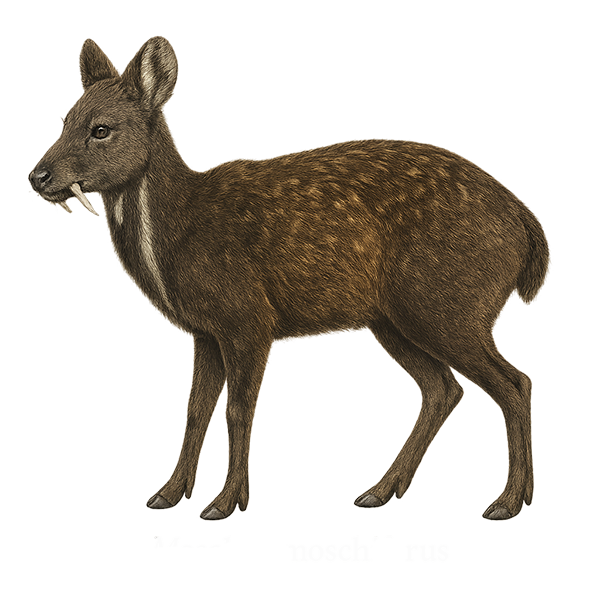Your wildlife photography guide.
Explore the siberian musk deer in detail, study its behavior, prepare your shots.
Where to observe and photograph the siberian musk deer in the wild
Learn where and when to spot the siberian musk deer in the wild, how to identify the species based on distinctive features, and what natural environments it inhabits. The WildlifePhotographer app offers tailored photography tips that reflect the siberian musk deer’s behavior, helping you capture better wildlife images. Explore the full species profile for key information including description, habitat, active periods, and approach techniques.
Siberian Musk Deer
Scientific name: Moschus moschiferus

IUCN Status: Vulnerable
Family: MOSCHIDAE
Group: Mammals
Sensitivity to human approach: Very shy
Minimum approach distance: 30 m
Rut period: December to January
Gestation: 185-195 jours
Births: June to July
Habitat:
Coniferous forests, mountains, taiga
Activity period :
Mainly active at night, generally discreet during the day.
Identification and description:
The Siberian Musk Deer, scientifically known as Moschus moschiferus, is a small deer species notable for its lack of antlers and the presence of long canine teeth in males. These animals are primarily nocturnal and inhabit the coniferous forests and mountainous regions of Northern Asia, particularly in Russia, Mongolia, and China. Their thick, brown fur provides excellent camouflage in their natural habitat. Male musk deer produce a fragrant substance, musk, which has been used in perfumery for centuries. Although their population is declining due to hunting for musk and habitat loss, they remain a fascinating and iconic species of the Siberian forests.
Recommended lens:
400 mm – adjust based on distance, desired framing (portrait or habitat), and approach conditions.
Photography tips:
To photograph the Siberian Musk Deer, it is essential to remain discreet and blend into the environment. Use a telephoto lens of at least 400mm to capture detailed images from a distance without disturbing the animal. Opt for twilight or nighttime hours when the musk deer is most active. Be patient and attentive to subtle movements in the dense vegetation. A tripod can be helpful to stabilize the camera in low light conditions.
The WildlifePhotographer App is coming soon!
Be the first to explore the best nature spots, track rutting seasons, log your observations, and observe more wildlife.
Already 1 432 wildlife lovers subscribed worldwide

